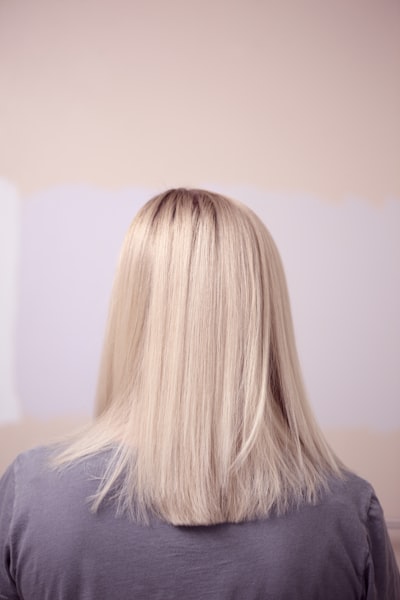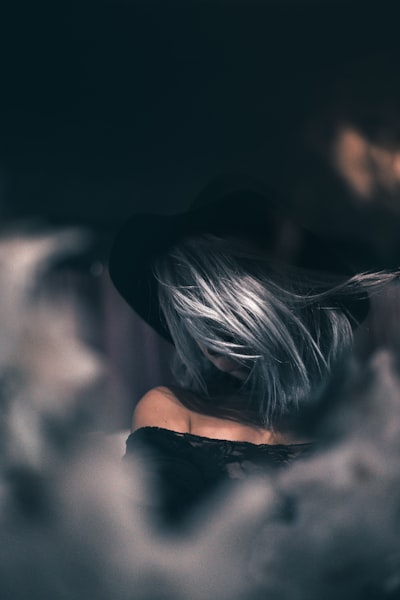Unlocking the Secrets of Japanese Hair Straightening Boston
What is Japanese hair straightening, and how does it work?
Japanese hair straightening, also known as thermal reconditioning, is a hair treatment that transforms wavy or curly hair into straight, sleek locks. It uses a combination of heat and chemicals to break down the hair's bonds and reshape them into a straight pattern, resulting in long-lasting straight hair.
Japanese hair straightening, also known as thermal reconditioning, is a popular treatment for those looking to achieve straight, sleek hair that lasts for months. This revolutionary straightening technique originated in Japan and has since gained popularity around the world, including in the vibrant city of Boston. If you're tired of frizz, curl, or unruly hair, The system may be the perfect solution for you. In this ultimate guide, we will explore the basics of Japanese straightening, the treatment process, its suitability for different hair types, the importance of post-treatment care, and where to find the best salons in Boston for this transformative treatment.
Understanding the Basics of Japanese Hair Straightening
Before diving into the treatment process, it's important to grasp the fundamentals of Japanese straightening. Unlike keratin treatments, which provide temporary smoothing of the mane, Japanese straightening offers a long-lasting straightening effect. This treatment is particularly effective for curly, frizzy, or unruly mane, as it permanently alters the hair's structure to create a straight, sleek look.

The Process of Japanese Hair Straightening Boston
The process of Japanese hair straightening involves several steps to achieve the desired straightening effect. It begins with the hair being shampooed and dried thoroughly. Once prepared, the stylist applies a straightening solution, which breaks the hair's bonds and allows it to be reshaped. Afterward, the hair is meticulously straightened using a straightening iron, sealing the newly straight shape. To enhance the hair's strength and shine, the treatment concludes with a keratin treatment.
Comparison: Japanese Hair Straightening vs. Keratin Treatment
While keratin treatments and Japanese hair straightening both offer benefits for achieving straight hair, there are some key differences between the two. Japanese straightening offers permanent straightening, while keratin treatments only provide temporary results. Additionally, Japanese straightening is more suitable for curly hair, while keratin treatments can work on various hair types. Another difference lies in the shampooing routine, as hair treated with the straightening system requires less frequent shampooing compared to keratin treatments. Lastly, keratin treatments primarily focus on reducing frizz, whereas this process straightens the hair from the roots to the ends, providing a straightening effect throughout the head.
Is Japanese Hair Straightening Suitable for You And Can I Continue To Do Coloring?
Before considering Japanese hair straightening, it's important to assess whether the treatment is suitable for your hair type. The system is ideal for individuals with curly, frizzy, or unruly hair, as it offers a long-lasting straightening effect. However, it may not be recommended for those who have undergone color treatments, perm, or other chemical treatments, as the hair may have already been weakened or damaged. It's essential to consult with a stylist to determine the compatibility of your hair with the treatment and to understand the potential effects of the treatment on your hair.
Factors to Consider Before Opting for the Treatment; Get Rid Of Frizz and Curl
Before deciding on Japanese hair straightening, there are several factors to take into consideration. First, evaluate the natural texture of your hair, as the system permanently alters the hair's structure. Additionally, consider the maintenance required after the treatment, including the use of specific products to maintain the integrity of your hair. It's also important to understand the potential damage that heat and chemicals can cause to your hair, and the commitment required, as the straightening effect is permanent. Consult with your stylist about your goals and the expected results of the treatment, ensuring they align with the capabilities of Japanese straightening.
What to Expect During a Japanese Hair Straightening Session?
Now, let's delve into the details of what to expect during a Japanese hair straightening Boston session. The treatment begins with the hair being shampooed, ensuring the hair is clean and free of any product buildup. Pre-treatment procedures, such as hair analysis, are performed to determine the compatibility with the treatment. Protective products may be applied to minimize damage, and hair strand tests are often conducted to assess the hair's integrity, strength, and the desired straightening outcome.
The Importance of Strand Testing
Strand testing plays a crucial role in the Japanese hair straightening process. It helps the stylist assess the hair's integrity, strength, and the desired straightening outcome. By performing strand tests, the stylist can customize the treatment according to your hair type and condition, ensuring the best possible results. Additionally, strand testing helps identify any potential damage or adverse reactions to the treatment, allowing the stylist to make the necessary adjustments to the treatment plan.
The Role of Consultation in Meeting Hair Goals By An Expert Stylist
A free consultation with your stylist is an essential step in the Japanese straightening process. It provides an opportunity for the stylist to understand your goals and expectations, as well as assess its condition, color, and integrity before the treatment. During the consultation, the stylist can recommend the most suitable straightening technique for your hair type, and discuss the treatment process, potential risks, and the expected results, ensuring that your goals align with the capabilities of the treatment.
Shampoo and Pre-Treatment Procedures
Before starting the process, proper shampooing is crucial to ensure it is thoroughly cleaned. Pre-treatment procedures, such as hair analysis, help determine the hair's compatibility with the treatment. They also include the application of protective products to minimize damage. The stylist may perform strand tests during the pre-treatment phase, as mentioned earlier, to assess the hair's integrity, strength, and the desired straightening outcome. Following the recommended shampooing and pre-treatment procedures is essential for the treatment's success, ensuring it. is in the best possible condition for the straightening process.
Can Japanese Straightening Be Combined With Sodium Hydroxide-Based Hair Relaxers or Perm?
One common question that arises is whether Japanese hair straightening can be combined with sodium hydroxide-based relaxers. The combination of these treatments requires careful consideration, as the compatibility of the straightening treatment with hair relaxers may vary. It is important to explore the effects of combining straightening and relaxers, as they can potentially enhance the straightening effects of the treatment. However, it is advisable to consult with your stylist to discuss the specific requirements of your hair type, the potential benefits, and any potential risks of combining the treatments.
Post-Treatment Care for Longer-Lasting Results
After undergoing Japanese hair straightening, proper post-treatment care is crucial for maintaining the longevity of your locks. Here are some essential care tips to maximize the results of your treatment:
a. Use the recommended care products: Your stylist will recommend specific care products that are suitable for your straightened hair. These products are designed to maintain the integrity of your hair and extend the lifespan of the straightening effects.
b. Avoid excessive heat: Excessive heat, such as frequent use of curling irons or straightening tools, can damage your straightened hair. Minimize the use of heat styling tools, and if you must use them, always apply a heat protectant product beforehand.
c. Protect your hair from humidity: Humidity can cause frizz and undo the straightening effects of your treatment. Use anti-frizz products, such as serums or leave-in treatments, to protect your hair from the effects of humidity.
d. Regular salon visits: To maintain the straightening effects, regular salon visits for touch-ups may be necessary. Consult with your stylist to determine the recommended frequency of salon visits based on your hair type and the desired results.
By following these post-treatment care tips, you can ensure your straightened hair looks its best and lasts longer, allowing you to enjoy the best benefits
Where to Get Japanese Hair Straightening in Boston?
Now that you're familiar with the process, suitability, and care of Japanese straightening, it's time to find the right salon in Boston for your treatment. It's important to choose a salon that specializes in relaxing as the treatment requires precision and expertise. Here are some key factors to consider when selecting a salon:
a. Reputation: Research the salon's reputation, read reviews, and ask for recommendations from friends or family who have undergone the treatment.
b. Expertise of the stylist: Ensure the salon has experienced stylists who are well-versed in the Japanese straightening technique.
c. Certification: Opt for certified salons, as they adhere to the highest standards of safety, quality, and professionalism.
d. Consultation process: A salon that prioritizes the consultation process, as mentioned earlier, is crucial. It shows the salon's commitment to understanding your hair goals and expectations, which leads to the best treatment results.
By considering these factors, you can find the ideal salon in Boston for your Japanese hair straightening treatment, ensuring a positive and transformative experience.
https://youtube.com/shorts/f5E0_3nt6qE?si=aVFOHM6Tpyf-VRpl
Why Certified Salons are Essential for Hair Treatments
Choosing a certified salon for your treatments, including Japanese straightening, is of utmost importance. Certified salons have undergone rigorous training, ensuring the highest standards of safety, quality, and professionalism. By opting for a certified salon, you can have peace of mind knowing that your locks are in the hands of trained professionals who are knowledgeable about the treatment. Certified salons also prioritize the use of high-quality products, ensuring the integrity of your hair is maintained throughout the treatment process. When it comes to hair treatments, it's essential to choose a salon that has the necessary certifications, as it guarantees the best results and overall salon experience.
Are the Results of Japanese Hair Straightening Permanent?
A common question that arises when considering this process is whether the straightening effects are permanent. The straightening achieved through this treatment is indeed long-lasting, offering a permanent straightening effect. However, it's important to note that as your hair grows, the treated hair will eventually need touch-ups to maintain the straightening results. Regular salon visits for touch-ups allow the stylist to reapply the treatment to the new growth, ensuring the straightening effect remains consistent throughout your hair.
https://youtube.com/shorts/Cqh8QrvRzMs
https://youtube.com/shorts/Cqh8QrvRzMs
https://support.google.com/business/answer/9156388
https://support.google.com/business/answer/9156388
https://support.google.com/business/answer/9156388
Conclusion
In conclusion, Japanese hair straightening is a popular treatment that can give you long-lasting straight hair. The process involves permanently altering the structure of your hair using heat and chemicals, so it's important to choose a reputable salon and stylist who is experienced in this technique. While the results of Japanese hair straightening are considered to be semi-permanent, maintenance is required to keep your hair looking its best. It's also important to consider factors such as your hair type, texture, and overall hair health before opting for this treatment. If you're in the Boston area and interested in getting this treatment, make sure to do your research and choose a certified salon for the best results.
Hair Extensions Background
At Noelle Salon, they evaluate your natural hair, and listen to the client's wishes on styling, color match, and look. They use human hair extensions like 100% Remy human hair, or Virgin Hair (unlike Bellami hair). Hair extensions can be used for short hair or 24 inches of a full head of hair, and they have worked with different methods like tape-in extensions, clip-in hair extensions, Keratin and enjoy using the Veila Pull-thru method with the Veila Hair Extensions for ease of hair care. Styling can vary from flat iron, natural curl, or curly hair. Whether you are looking for a change of style or look for a day such as a Clip-in ponytail, having a high-quality ponytail extension can mix it up for you. Your natural hair journey with your hair growth can be enhanced with Hair extensions when protective styling is applied, and regular maintenance is used. You can change your hair in one day - feel free to reach out and explore the possibilities.







